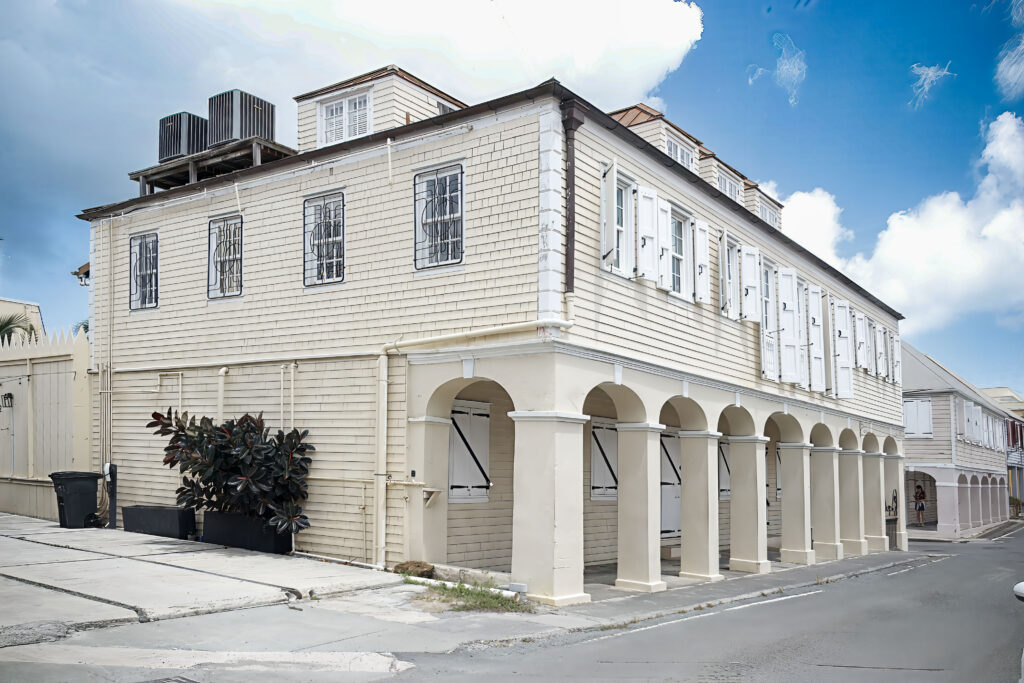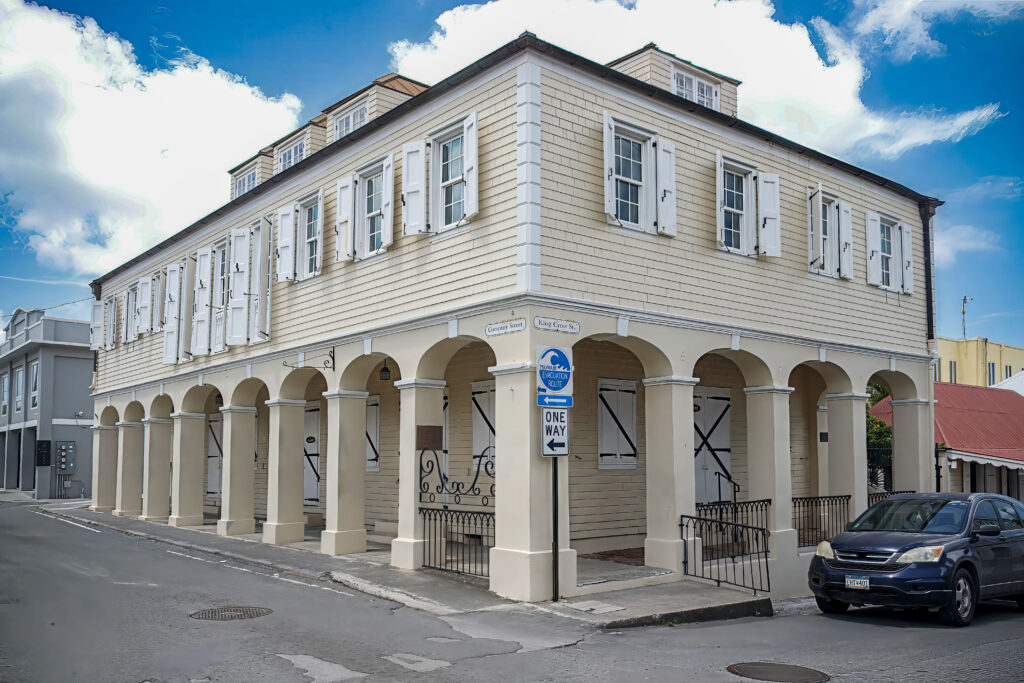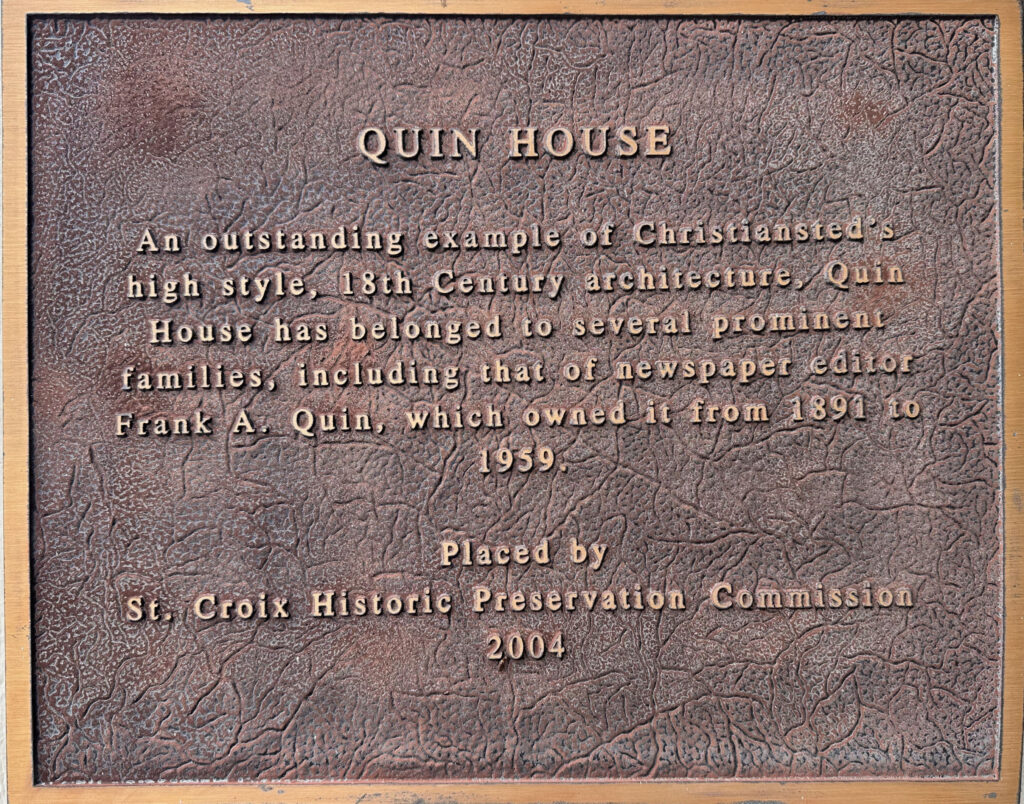John T. Quin
The building at the corner of 51 Company St. at King Cross St. is now called the Quin House. It was purchased by John T. Quin in 1891, and it stayed in the Quin family for two more generations. Quin was the publisher/editor of the St. Croix Avis and the author of The Building of an Island.
John Thomas Quin was born in the mid-19th century (exact birthdate uncertain, but likely in the 1850s–1860s) during the Danish colonial period of St. Croix, Danish West Indies. He grew up in a period of economic and social transition after Emancipation (1848) and the decline of the sugar industry.
Early Life and Background
Though not trained as a scientist, Quin developed a keen interest in the natural world and in public life. His background as a schoolmaster equipped him with the habit of teaching and interpreting knowledge for a general audience.
Career in Education and Journalism
Quin became known locally as a teacher and journalist, serving as editor of the St. Croix Avis, one of the island’s longest-running newspapers. His work at the paper gave him influence in shaping public opinion and documenting civic life.
- Editor of the St. Croix Avis — Quin’s tenure placed him at the center of political, cultural, and economic discourse on the island.
- Public intellectual — Beyond the paper, Quin regularly wrote essays, reviews, and notes on local history and the natural environment.
Geological Writings — The Building of an Island (1907)
Quin’s most enduring legacy is his book, The Building of an Island: A Sketch of the Geological Structure of St. Croix, Danish West Indies (1907).
- Written in a popular style, it aimed to interest ordinary Crucians in the rocks and landscapes of their island.
- The book includes maps, diagrams, fossil sketches, and observations of the island’s volcanic and sedimentary formations.
- Later geologists (including those of the USGS) cited his work as an early attempt at a local geological survey.
Though not a professionally trained geologist, Quin’s careful observations and accessible writing made him a respected amateur naturalist whose work bridged science and education.
Quin, though described as a schoolmaster and amateur geologist, was evidently taken seriously enough in intellectual and scientific circles to be elected a Fellow of the Royal Geological Society (F.R.G.S.)
The F.R.G.S. adds weight to his standing: he wasn’t merely dabbling as a local hobbyist; his observations in The Building of an Island carried enough credibility to earn him international recognition.
Legacy
John T. Quin is remembered today as:
- An educator — who used his position as a schoolmaster to spark curiosity about the island.
- A journalist — who, through the Avis, chronicled daily life and advocated for civic engagement.
- An amateur geologist — who left a lasting imprint with The Building of an Island, a blend of science and storytelling.
- A citizen of Christiansted — whose family home still bears his name, linking the town’s architecture with its intellectual heritage.
His life reflects the story of a self-taught island scholar, bridging European scientific traditions with local knowledge in the Caribbean context.
.
Note on the Quin House Plaque
A bronze plaque on the Quin House attributes its ownership from “1891–1959” to Frank A. Quin, described as a newspaper editor. However, contemporary records and sources—including St. Croix Avis mastheads and John T. Quin’s own 1907 book The Building of an Island—identify John T. Quin as both the editor/publisher of the Avis and the purchaser of the house in 1891. At this time, no archival evidence has been found for a “Frank A. Quin” serving as an editor in St. Croix. The discrepancy likely arises from a misnaming on the plaque, with John T. Quin being the correct attribution.
Update 9/30/25: This author contacted George F. Tyson, Historian, State Historic Preservation Office, Department of Planning and Cultural Affairs, who confirmed that the plaque is in error and the correct attribution is to John T. Quin.


